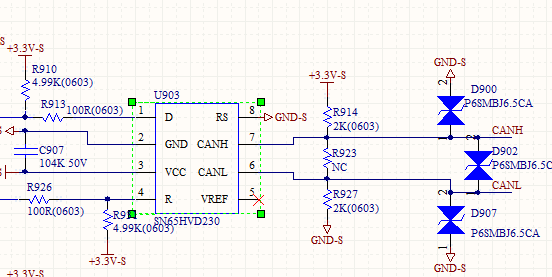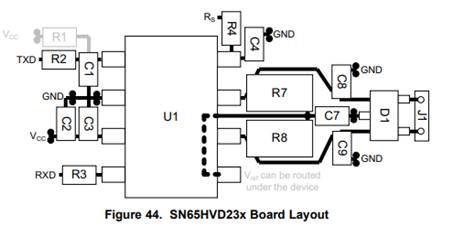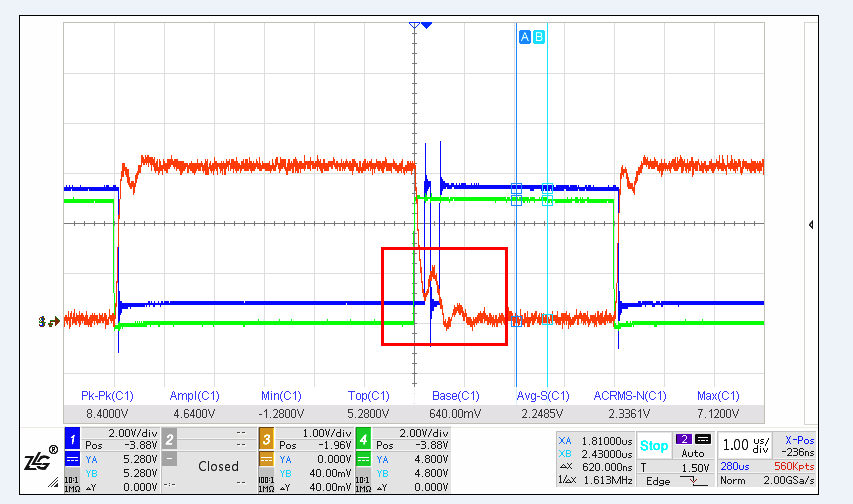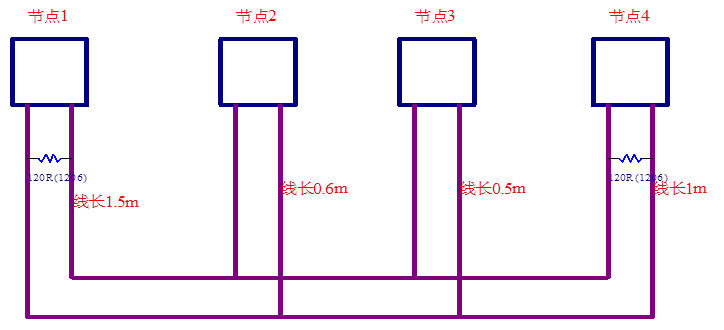Hi, expert,
My customer is using 4-6 pcs SN65HVD230 for CAN communication, but found it will be oscillation at CAN_H and CAN_L, and it can make CAN communication failed some time. If not add these TVS tubes, there will no oscillation, or if there is only 1 pcs SN65HVD230 with TVS, there will also no oscillation.
Is this TVS necessary in this design?
I check the datasheet, the layout recommend add a differential mode TVS tube. But when I let customer remove D900 and D907 as our datasheet, there are also oscillation as below picture. The blue and green waveform are D and R signals. The red waveform is differential output CAN_H-CAN_L.
Could you please help analysis this issue and give a guidance about how to add TVS tube? Thanks.
Best Regards.
Chen





